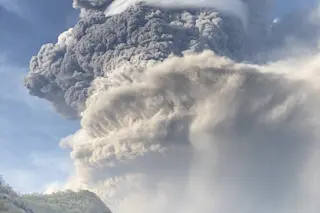The explosions at La Soufrière on St. Vincent that started last week appear to only be a throat clearing. Earlier today (April 12), the volcano unleashed even larger explosions and sent pyroclastic flows racing down the volcano after the dome collapsed. This is very bad news for anyone who might have remained in the Red Zone around La Soufrière.
Ash from the explosions have reached well over 40,000 feet (12 kilometers) and is readily seen drifting across the Atlantic to the east of St. Vincent. The towns on the island itself are getting a steady rain of ash and there have been reports of collapsed roofs. Remember, volcanic ash is many times denser than snow, so a few inches of ash (especially when combined with rain) can easily collapse weak roofs. The University of West Indies Seismic Research group thinks we should expect at least a few more days of ...














